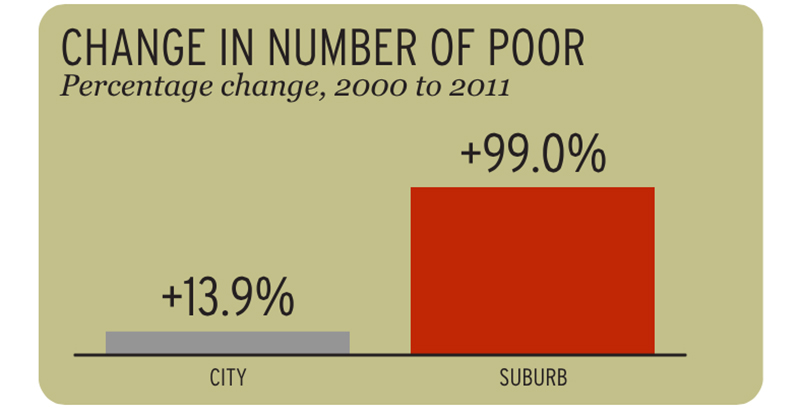Chicago public school officials announced last Friday that enrollment over the past year had continued a nearly two-decade downward trend, declining by about 10,000 students. Roughly 371,000 students now attend the city’s schools, a 15 percent drop since 2002.
If America’s demographic change is a river flowing southwest, the news was a soft lapping against the banks. Throughout the Northeast and Midwest, and in older cities across the country, urban districts have been losing students for years. (Rural districts, too.)
Social scientists have produced prodigious research about the broad trends that affect enrollment — including birth rates, immigration, and shifting job markets — but education policy doesn’t seem to have caught up yet with at least two new challenges: the suburbanization of poverty and rethinking how students are assigned to schools in shrinking districts.
To be sure, the school population nationally is growing. Between 2000 and 2015, enrollment increased roughly 6 percent, to 50.5 million; nine states, most Western, enjoyed enrollment growth of 15 percent or more. But Chicago’s experience is typical of many cities and states: New York City lost 70,000 students between 2000 and 2014 — about 7 percent of the district — even as the city’s overall population grew. Enrollment in Los Angeles Unified School District has fallen by 7 percent since 2010.
Cities hit harder by economic change and smaller cities have higher percentage changes: The public schools in Manchester, New Hampshire, suffered a 16 percent enrollment decline over a 10-year period, ending in 2014; enrollment went down 21 percent in Hartford, Connecticut, over a decade, ending in 2016.
Detroit, the Job of school districts, has experienced a 72 percent dip in enrollment over the last quarter-century, overshadowing nearby Flint, where enrollment plummeted from 26,000 to 4,806 during the same period. Total enrollment in Michigan’s public schools is at its lowest since the 1950s, MLive reported.
The declining numbers point to — but aren’t a primary cause of — what it means to be poor in the U.S. today. Emily Badger of CityLab reports that between 2000 and 2011, the population living in poverty in cities rose by 29 percent, while the population living in poverty in the suburbs of metropolitan areas across the country rose by 64 percent. More poor people live in suburbs (16.4 million) than in cities (13.4 million).


Elizabeth Kneebone, a non-resident fellow at the Brookings Institution who has written extensively about the growth of suburban poverty, told Badger, “Often when we talk about rising suburban poverty, people automatically think about, ‘Well, who’s moving into these neighborhoods?’ ”
“But it’s not just people moving in,” she said. “There have been two downturns in the last decade, and long-running structural changes in the economy, finding a lot of longtime suburban residents growing poorer, slipping down the economic ladder.”
“The geography of poverty has changed,” says Scott Allard, a professor of public policy at the University of Washington, but programs targeting poverty still focus on cities or use urban approaches that depend on factors like easy access to transportation. Kneebone notes that suburban schools need more support and expertise in educating increasingly disadvantaged populations.
Meanwhile, many cities with declining enrollment face the politically arduous task of closing or consolidating now-underutilized schools. Facing a billion-dollar shortfall in 2013, Chicago closed 47 schools amid intense criticism. The city’s displaced students were enrolled in higher-performing schools, but if depopulation makes closure and consolidation more common in urban spaces, district leaders — like their suburban peers — will need a new set of skills.
Get stories like these delivered straight to your inbox. Sign up for The 74 Newsletter


;)
